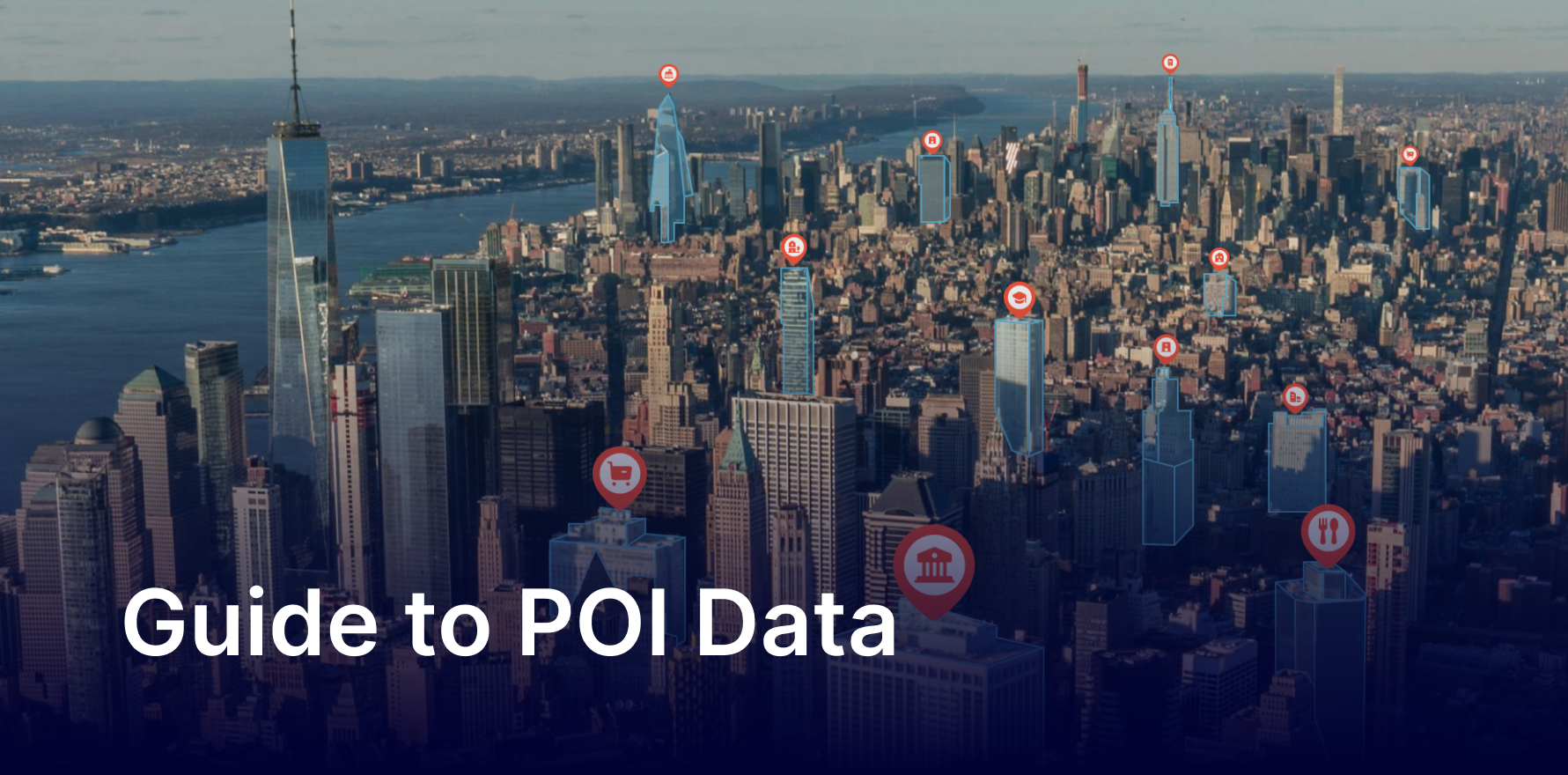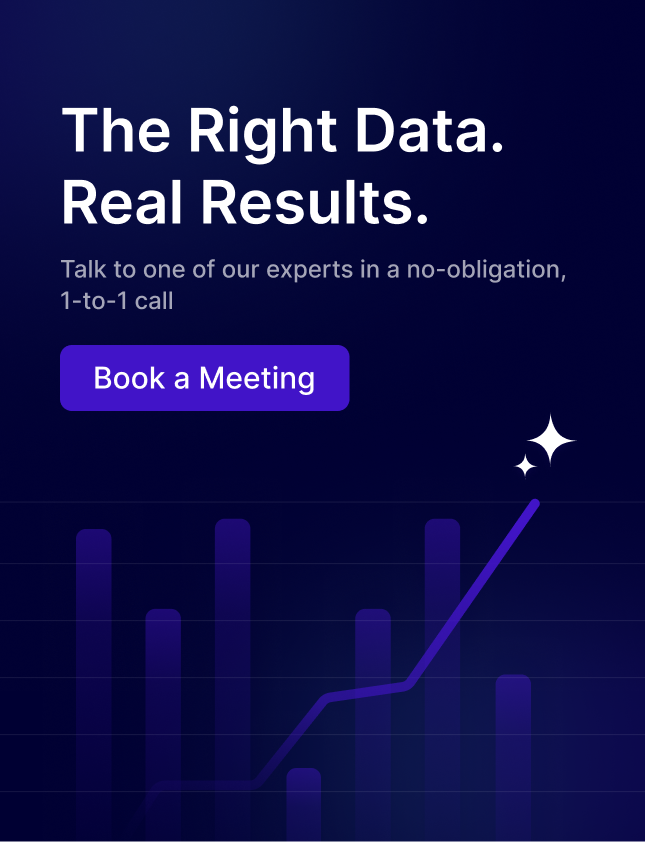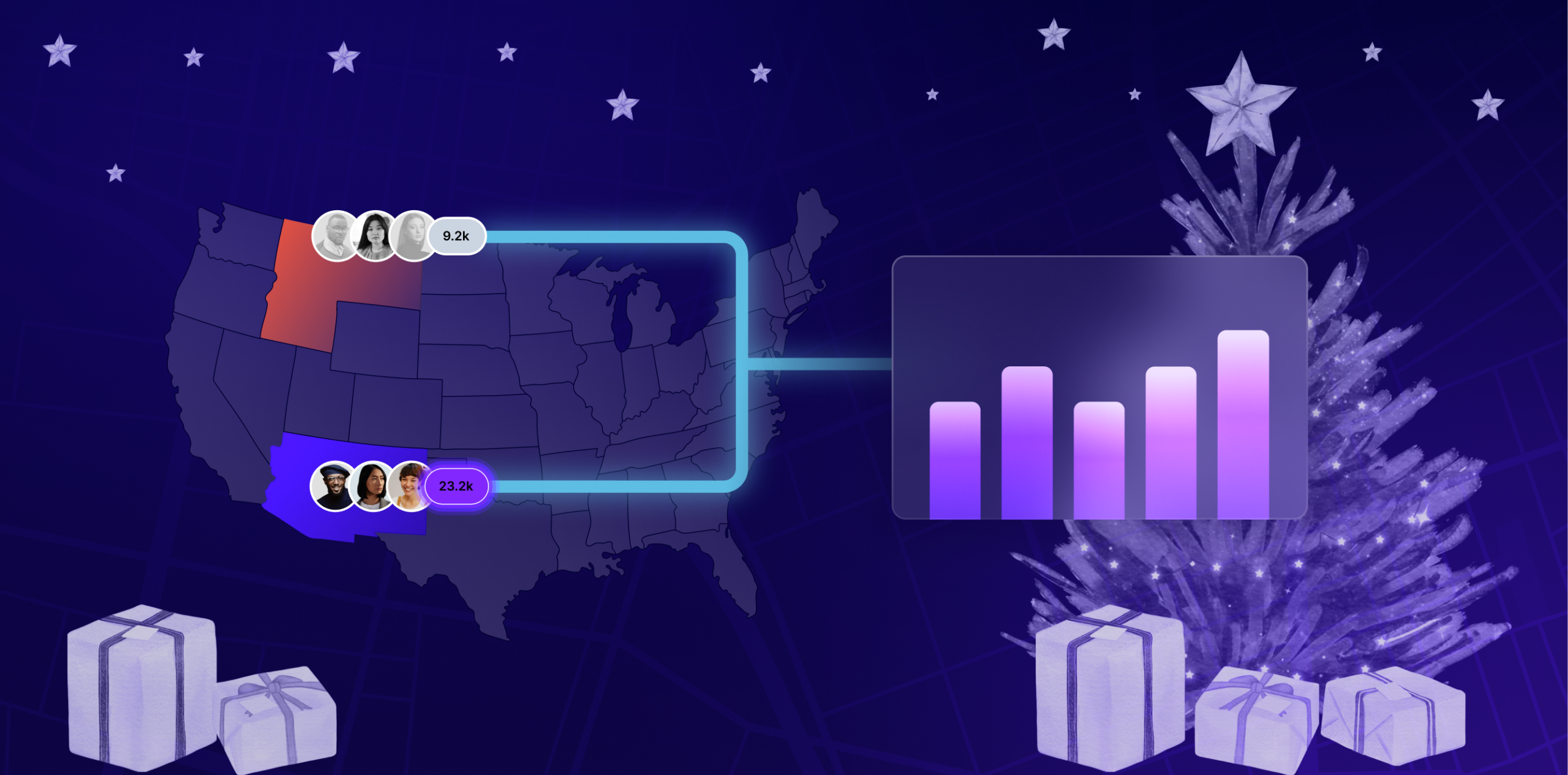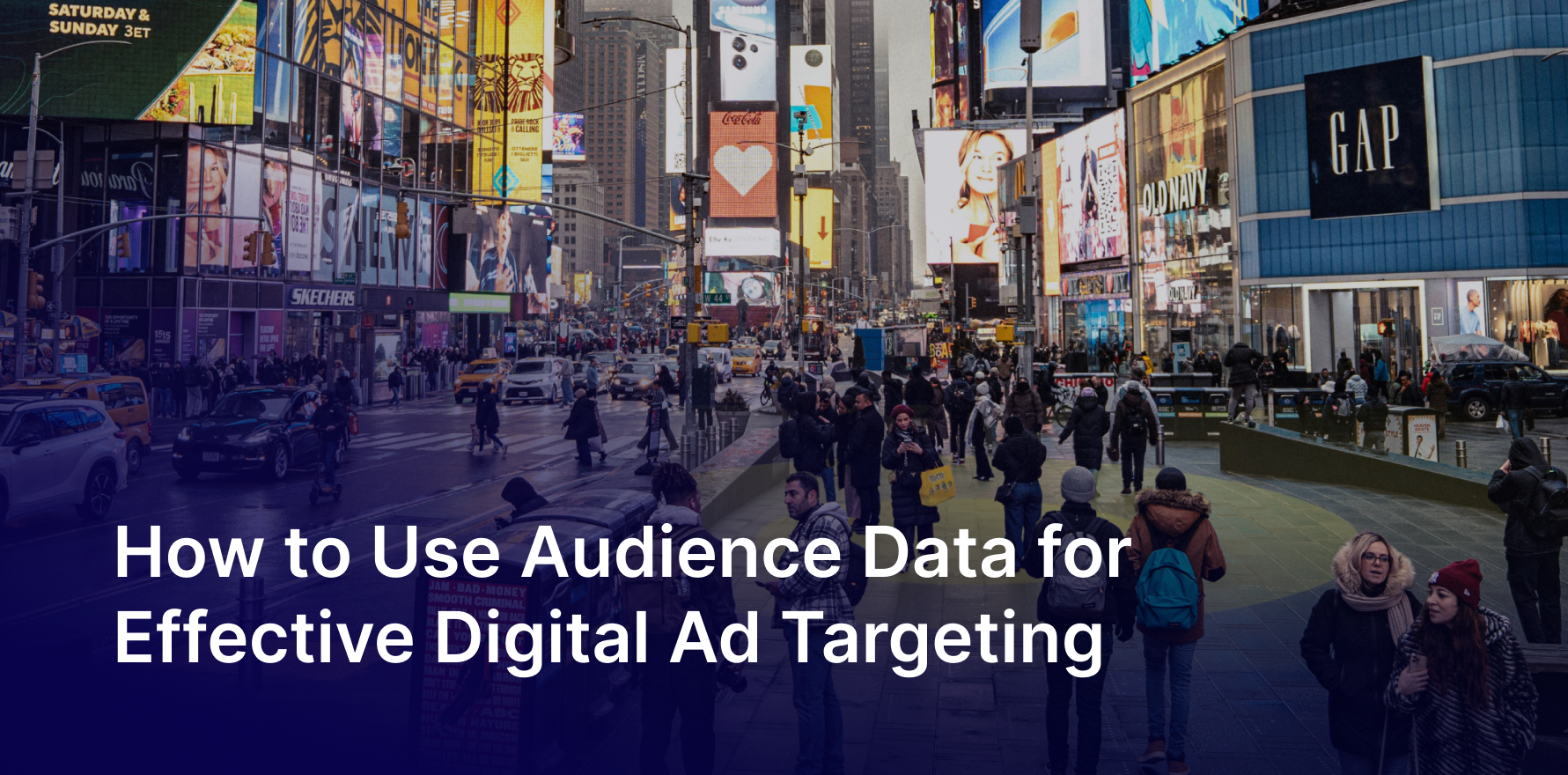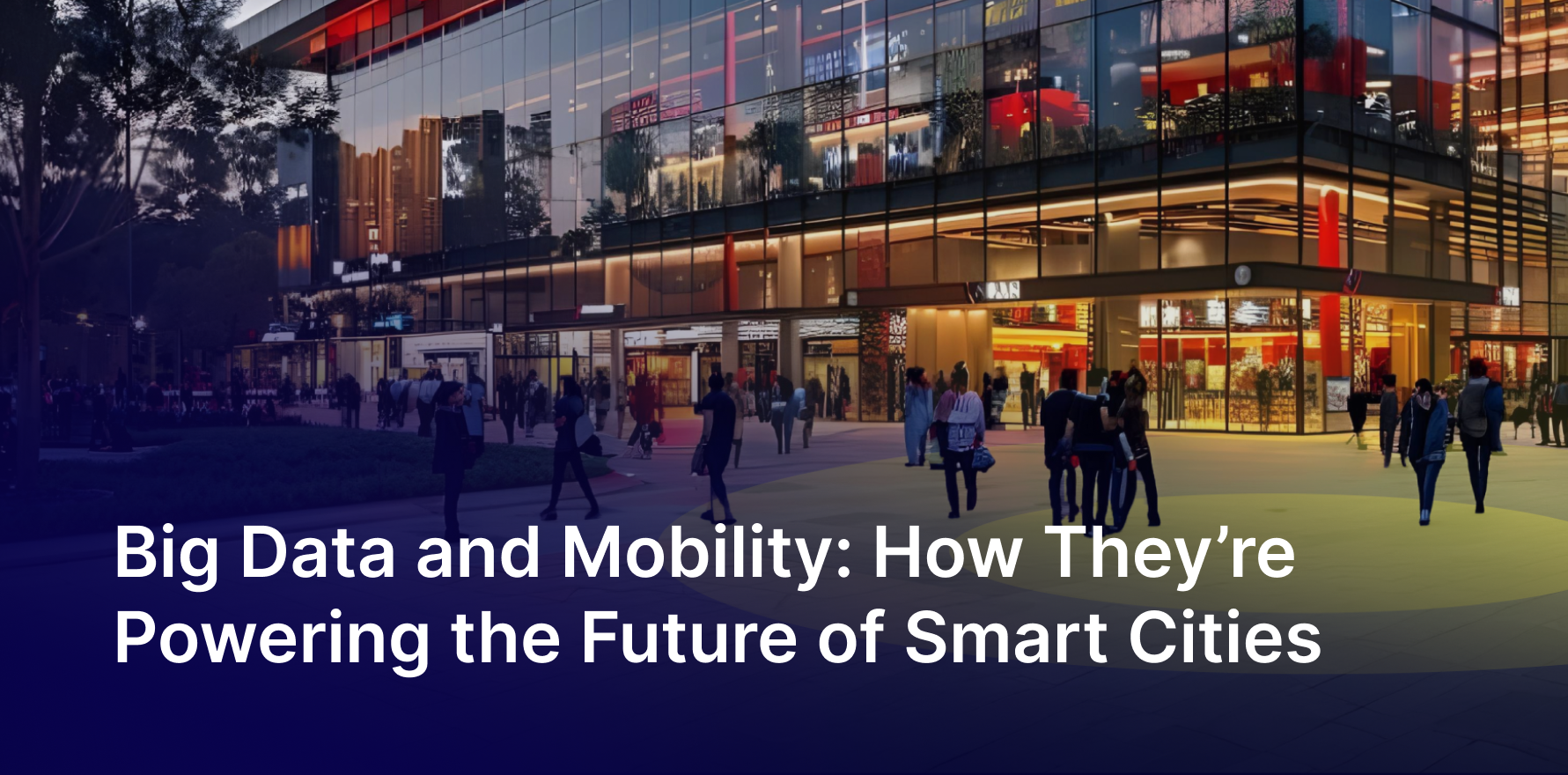Have you ever wondered why certain places catch our attention and draw crowds? Point of Interest (POI) data is the key.
This data provides detailed information about real-world geographical locations, explaining why a place is interesting and to whom. In today’s interconnected world data plays a vital role in enabling businesses and organizations to make informed decisions and provide personalized experiences.
This blog aims to provide a comprehensive understanding of POI data, Industries benefiting from POI data, Use cases, Quality check and things to keep in mind while buying POI data.
What is a Point Of Interest Data?
Point of Interest (POI) data refers to a specific place or location on a map that someone might find interesting or useful. Point of interest range from everyday spots like grocery stores, restaurants, and gas stations to more notable locations like parks, malls, tourist attractions, and hotels.
With the convenience of smartphone maps, finding and visiting these POIs has never been easier. These locations attract scores of visitors because they offer services or experiences that people need or want.
Collecting POI data helps us learn more about these locations and the people who visit them. This information is invaluable for enhancing the visitor experience by catering to their needs and engaging them in meaningful ways. POIs can be temporary, like a pop-up shop, or permanent, such as a historical monument or heritage site.
For businesses and public agencies, insights derived from POI data are essential. They can predict trends, optimize operations, and develop effective strategies. By connecting people’s movements with physical locations, businesses can visualize and analyze traffic flow, uncovering patterns that lead to impactful decisions. To check importance of poi data and its benefits read this article which talks more about what is poi data?
Benefits of POI Data
The top benefits of POI data are described below:
1) Enhanced User Experience
POI data enables personalized recommendations and efficient navigation, improving overall user satisfaction. Users can find relevant locations quickly and access detailed information about each Point Of Interest.
2) Improved Decision-Making in Marketing
Businesses can make data-driven decisions, optimizing marketing strategies and campaigns for better results. Marketers can identify high-traffic areas by analyzing POI data and tailor their campaigns to local demographics.
3) Increased Business Opportunities
Understanding customer behavior and identifying high-traffic locations can lead to new business opportunities and revenue streams. Companies can use POI data to find the best places for new stores, optimize supply chains, and enhance customer engagement.
4) Better Resource Management
Accurate POI data helps in the efficient placement and management of resources and services, enhancing operational efficiency. Organizations can plan maintenance schedules, allocate resources effectively, and improve service delivery.
Key Challenges in POI Data
1) Accuracy and Timeliness
POI data can quickly become outdated due to the ever-changing physical landscape — new store openings, closures, renovations, and shifting business hours all impact its reliability.
Solution: Using Factori’s POI Data, businesses get continuously updated datasets sourced from multiple verified channels, ensuring every location entry stays relevant. This allows marketers, planners, and analysts to make decisions with confidence, knowing their data reflects the real-world in near-real-time.
2) Data Integration
POI data often comes from multiple providers, each with different formats, standards, and collection methods, making it hard to unify and analyze.
Solution: Factori delivers clean, standardized POI datasets that integrate seamlessly into BI tools, GIS platforms, and custom analytics pipelines. This removes the need for heavy pre-processing and accelerates time-to-insight.
3) Privacy Concerns
Location data can raise privacy issues, especially when combined with user-generated content or personal identifiers. Businesses must ensure compliance with regulations like GDPR and CCPA.
Solution: Factori’s POI Data is aggregated, anonymized, and privacy-compliant by design, allowing organizations to leverage location intelligence without risking data misuse or legal penalties.
4) Scalability Issues
As POI datasets grow into the millions or hundreds of millions of records, storing, processing, and analyzing them efficiently becomes a major technical challenge.
Solution: Factori provides scalable infrastructure and optimized APIs that handle massive datasets without compromising performance, enabling organizations to run complex geospatial queries and analytics at scale.
Industries solving their business application using POI Data
1. Marketing & Advertising:
A leading apparel chain utilized our POI data to refine its marketing and inventory management. By analyzing foot traffic and customer demographic trends across different locations, it tailored in-store promotions and product placements to match local preferences, leading to a 30% increase in customer engagement during promotional periods.
2. FMCG & Retail:
A fast-food franchise planning to expand into Eastern Europe used our data to analyze potential locations. They studied foot traffic, competitor proximity, and local dining habits, successfully identifying prime locations that maximized customer reach and minimized competitor cannibalization.
3. Real Estate:
A municipal government employed our POI data to revamp its public transportation system. By analyzing commuter patterns and peak usage times at key transit nodes, they redesigned bus routes and schedules, enhancing service efficiency and reducing overcrowding during rush hours.
4. Telecommunications:
For planning the placement of cell towers and improving network coverage.
5. Hospitality and Tourism:
To enhance visitor experiences and plan new attractions.
6. Academic Institutes:
For planning the locations of schools and educational institutions.
7. Government Organizations:
For optimizing the placement of public infrastructure such as power lines and water supply networks.
Future Trends in POI Data
a) Advancements in Data Collection Technologies
New technologies, such as drones, IoT devices, and satellite imagery, are enhancing the accuracy and efficiency of POI data collection. These advancements enable real-time data updates and more detailed geographic insights.
b) Integration with AI and Machine Learning
AI and machine learning analyze POI data, providing deeper insights and predictive analytics. These technologies help identify patterns, forecast trends, and automate data processing.
c) Enhanced Data Privacy Measures
New regulations and technologies are being developed to protect user privacy while utilizing POI data. Privacy-Enhancing Technologies (PETs) and stricter compliance standards are becoming essential in the data ecosystem.
d) Growing Importance in Smart Cities
POI data is becoming increasingly vital in developing smart cities, where data-driven decisions improve urban living and resource management. Innovative city initiatives use POI data to enhance transportation, energy management, public safety, and citizen services.
Common Use Cases for POI Data
a) Geofencing: Creating virtual boundaries around locations to trigger specific actions when a device enters or exits.
b) Geo-Targeted Advertising: Delivering personalized advertisements based on the user’s location relative to a POI.
c) Marketing Campaign Strategy: Identifying optimal locations for marketing activities and understanding the demographic profiles of visitors.
d) Traffic Management: Planning routes, managing congestion, and optimizing traffic flow based on visitor patterns.
e) Site Selection: Choosing ideal locations for new businesses or facilities based on proximity to relevant POIs.
f) OOH/DOOH Campaign Planning: Planning Out-of-Home and Digital Out-of-Home advertising campaigns by identifying high-traffic locations.
Key attributes associated with POI data :
1) Location Information
Latitude and longitude coordinates, full address, and geographic boundaries.
2) Operational Information
Business hours, seasonal variations, and special hours (e.g., holidays).
3) Categorization
Type of place (e.g., restaurant, park, retail store), industry classification.
4) Additional Attributes:
Foot traffic data, demographic insights.
Points to Keep in Mind While Testing the Quality of POI data
1) Source Credibility
Verify the reliability of data sources such as on-site data collection and reputable third-party providers.
2) Accuracy
Cross-reference data with known information or multiple sources to confirm precision in location coordinates, addresses, and other details.
3) Recency
Check how frequently the data is updated. Our data is refreshed quarterly to capture changes in operation timings, location changes, and other relevant updates.
4) Coverage
Ensure the data includes all necessary POIs and relevant attributes for your specific needs.
5) Consistency
Verify that the data is consistent across different sources and follows a standardized format for seamless integration.
Data Methodology: POI Data
POI data is collected from a variety of sources:
- Onsite Data Collection: Field representatives gather first-hand information about locations.
- Geocoding Services: Map services and navigation systems offer extensive location information.
- Mobile App SDKs: Device movement data collected via mobile app SDKs is overlaid on POI polygons to identify visitors and gather insights about foot traffic.
When purchasing POI data from vendors, consider the following quality indicators:
- Refresh Rate: How frequently the data is updated to reflect changes.
- Data Accuracy: The precision of location coordinates, addresses, and other attributes.
- Coverage: The extent of geographic and categorical coverage of the data.
- Compliance : Make sure the sourced data is compliant with applicable global privacy standards Eg: CCPA, GDPR
Final Thoughts
At Factori.ai, we pride ourselves on our meticulous data collection and aggregation process. We gather our POI Data from multiple global sources, ensuring privacy concerns do not arise. Our unique methodology combines various attributes, such as location ID, time of day, and day of the week, to deliver precise location intelligence.
To checkout details POI data schema and reach stats – Click here
Get your Free data sample
You may also like

